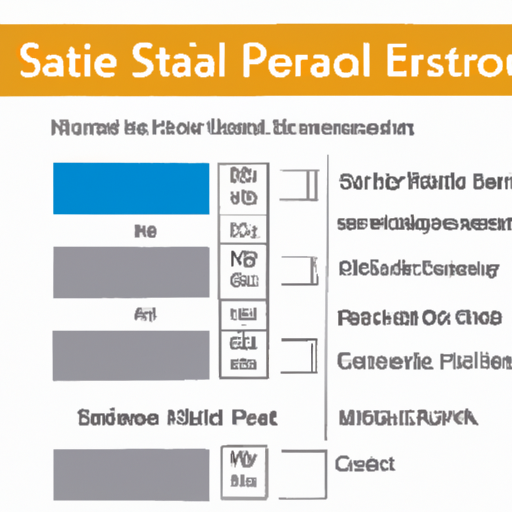Solid-state batteries are a promising technology that has the potential to revolutionize the energy storage industry. These batteries use solid electrolytes instead of liquid electrolytes, which can provide several advantages such as higher energy density, faster charging times, and improved safety. As the demand for solid-state batteries continues to grow, it is important to establish product standards to ensure the quality and performance of these batteries.

1. Energy density: One of the key advantages of solid-state batteries is their higher energy density compared to traditional lithium-ion batteries. Product standards should specify the minimum energy density that a solid-state battery must meet in order to be considered for listing. This helps to ensure that the batteries are able to provide sufficient power for a wide range of applications.
2. Cycle life: Another important factor to consider when listing solid-state batteries is their cycle life, or the number of charge-discharge cycles that the battery can withstand before its capacity starts to degrade. Product standards should specify the minimum number of cycles that a solid-state battery must be able to withstand in order to be considered for listing. This helps to ensure that the batteries are durable and long-lasting.
3. Safety: Safety is a critical concern when it comes to batteries, especially in applications where the batteries are subjected to high temperatures or mechanical stress. Product standards should include requirements for safety features such as overcharge protection, overdischarge protection, and short circuit protection. These features help to prevent accidents and ensure that the batteries can be used safely in a wide range of applications.
4. Charging time: One of the key advantages of solid-state batteries is their faster charging times compared to traditional lithium-ion batteries. Product standards should specify the maximum charging time that a solid-state battery must meet in order to be considered for listing. This helps to ensure that the batteries are able to charge quickly and efficiently, making them suitable for use in applications where fast charging is important.
5. Environmental impact: Product standards should also consider the environmental impact of solid-state batteries. This includes factors such as the materials used in the batteries, their recyclability, and their energy efficiency. Product standards should encourage the use of sustainable materials and manufacturing processes to minimize the environmental impact of solid-state batteries.
In addition to these key product standards, there are also industry-specific standards that may apply to solid-state batteries. For example, batteries used in electric vehicles may need to meet specific standards for performance, safety, and durability. Similarly, batteries used in medical devices may need to meet standards for reliability and compatibility with other equipment.
Overall, establishing product standards for solid-state batteries is essential to ensure that these batteries meet the necessary criteria for performance, safety, and reliability. By adhering to these standards, manufacturers can help to build consumer confidence in solid-state batteries and promote their widespread adoption in a variety of applications.
Solid-state batteries are a promising technology that has the potential to revolutionize the energy storage industry. These batteries use solid electrolytes instead of liquid electrolytes, which can provide several advantages such as higher energy density, faster charging times, and improved safety. As the demand for solid-state batteries continues to grow, it is important to establish product standards to ensure the quality and performance of these batteries.

1. Energy density: One of the key advantages of solid-state batteries is their higher energy density compared to traditional lithium-ion batteries. Product standards should specify the minimum energy density that a solid-state battery must meet in order to be considered for listing. This helps to ensure that the batteries are able to provide sufficient power for a wide range of applications.
2. Cycle life: Another important factor to consider when listing solid-state batteries is their cycle life, or the number of charge-discharge cycles that the battery can withstand before its capacity starts to degrade. Product standards should specify the minimum number of cycles that a solid-state battery must be able to withstand in order to be considered for listing. This helps to ensure that the batteries are durable and long-lasting.
3. Safety: Safety is a critical concern when it comes to batteries, especially in applications where the batteries are subjected to high temperatures or mechanical stress. Product standards should include requirements for safety features such as overcharge protection, overdischarge protection, and short circuit protection. These features help to prevent accidents and ensure that the batteries can be used safely in a wide range of applications.
4. Charging time: One of the key advantages of solid-state batteries is their faster charging times compared to traditional lithium-ion batteries. Product standards should specify the maximum charging time that a solid-state battery must meet in order to be considered for listing. This helps to ensure that the batteries are able to charge quickly and efficiently, making them suitable for use in applications where fast charging is important.
5. Environmental impact: Product standards should also consider the environmental impact of solid-state batteries. This includes factors such as the materials used in the batteries, their recyclability, and their energy efficiency. Product standards should encourage the use of sustainable materials and manufacturing processes to minimize the environmental impact of solid-state batteries.
In addition to these key product standards, there are also industry-specific standards that may apply to solid-state batteries. For example, batteries used in electric vehicles may need to meet specific standards for performance, safety, and durability. Similarly, batteries used in medical devices may need to meet standards for reliability and compatibility with other equipment.
Overall, establishing product standards for solid-state batteries is essential to ensure that these batteries meet the necessary criteria for performance, safety, and reliability. By adhering to these standards, manufacturers can help to build consumer confidence in solid-state batteries and promote their widespread adoption in a variety of applications.